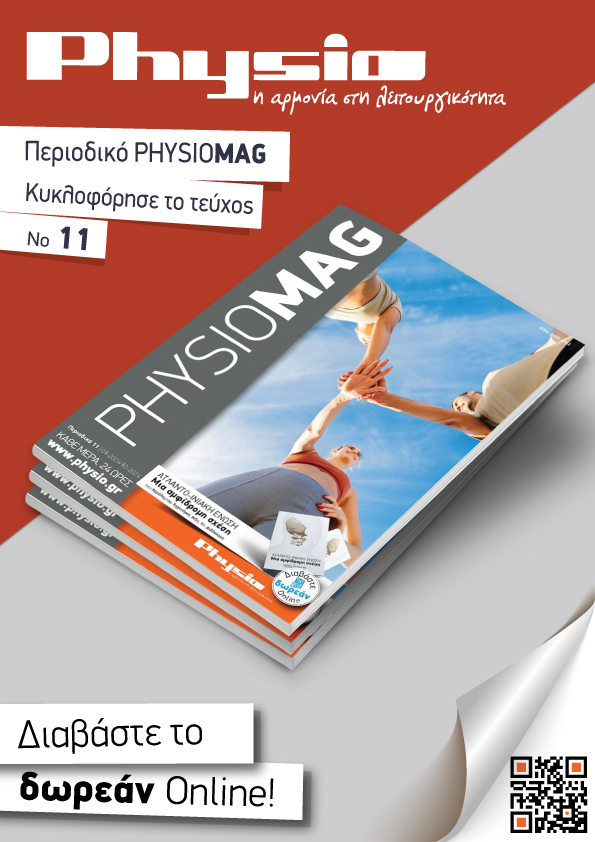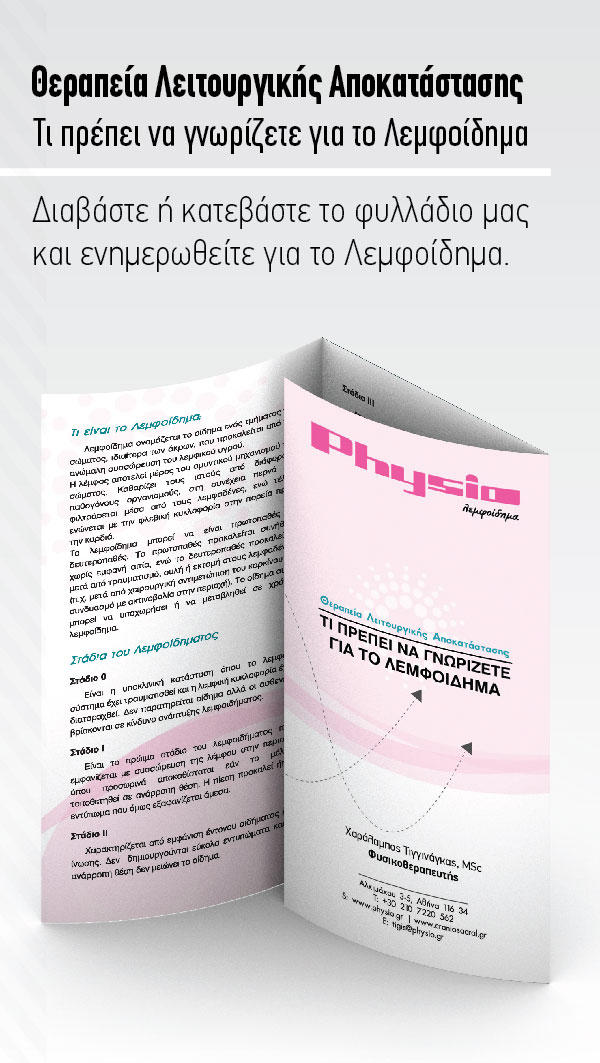Lymphatic system: Facts & Functions
The lymphatic system is a network of tissues and organs that runs throughout the body. Primarily consists of lymph vessels, lymph nodes and lymph. The tonsils, adenoids, spleen and thymus are all part of the lymphatic system. The lymphatic system is like the blood circulation - the tubes (vessels) branch through all parts of the body like the arteries and veins that carry blood.
 But the lymphatic system tubes are much finer and carry a colourless liquid called lymph. There are 600 to 700 lymph nodes in the human body that filter the lymph before it returns to the circulatory system. You can probably feel some of your lymph nodes. There are lymph nodes in many parts of your body including: Under the arms, in armpits, in each groin (at the top of your legs), in neck. There are also lymph nodes that you cannot feel in abdomen, pelvis, chest. There are two drainage areas that make up the lymphatic system. The right drainage area handles the right arm and chest. The left drainage area clears all of the other areas of the body, including both legs, the lower trunk, the upper left portion of the chest, and the left arm. The lymphatic system does several jobs in the body. It drains fluid back into the bloodstream from the tissues, filters lymph & the blood, fights infections Diseases of Lymphatic system:
But the lymphatic system tubes are much finer and carry a colourless liquid called lymph. There are 600 to 700 lymph nodes in the human body that filter the lymph before it returns to the circulatory system. You can probably feel some of your lymph nodes. There are lymph nodes in many parts of your body including: Under the arms, in armpits, in each groin (at the top of your legs), in neck. There are also lymph nodes that you cannot feel in abdomen, pelvis, chest. There are two drainage areas that make up the lymphatic system. The right drainage area handles the right arm and chest. The left drainage area clears all of the other areas of the body, including both legs, the lower trunk, the upper left portion of the chest, and the left arm. The lymphatic system does several jobs in the body. It drains fluid back into the bloodstream from the tissues, filters lymph & the blood, fights infections Diseases of Lymphatic system:
The lymphatic system clears away infection and keeps your body fluids in balance. If it's not working properly, fluid builds in your tissues and causes swelling, called lymphedema. Lymphedema is a chronic swelling of the limbs caused by the accumulation of lymph fluid that occurs if the lymphatic system is damaged or not functioning properly. Many develop the disorder following cancer therapy — particularly breast cancer where the lymph nodes under the arms are removed — recurrent infections, injuries or vascular surgery. Hodgkin's lymphoma is a type of cancer that typically occurs when the white blood cells in the body become diseased or damaged. In elephantiasis, infection of the lymphatic vessels causes a thickening of the skin and enlargement of underlying tissues. Lymphangiosarcoma is a malignant soft-tissue tumor. The disorder of Lymphedema is lifelong.
What are the signs of lymph problems?
Lymph symptoms occur when your lymphatic system becomes inflamed, blocked or damaged. A lymphatic obstruction prevents lymphatic vessels from effectively draining fluids from the tissues in the body. There are two types of lymphedema: primary and secondary.
Types of lymphedema:
PRIMARY - from birth or developed later in life
- Birth - developmental abnormality of the lymphatic system
- women more prone than men, legs affected more than arms
- lymphatic vessels are impaired or missing
- Praecox - appears in puberty and occurs mostly in females; typically one leg is affected
- Tarda - appears later in life, can be male or female, sudden onset swelling with no apparent cause
SECONDARY - lymph nodes were removed or lymph vessels damaged due to one or more of the following
- Surgery and/or radiation treatment of breast, gynecological, head, neck, prostate, testicular, bladder, colon CA or melanomas
- Trauma, injury, or accident resulting in blocked/damaged lymph system
- Infections - interrupt normal lymph pathway function
Lymphedema may be caused by:
Infections such as chronic cellulites, trauma, tumors, certain surgeries (for cancers such as breast or testicular), blood vessel repair, radiation treatment
What to Expect?
Lymphedema may start 6 - 8 weeks after surgery or after radiation treatment for cancer. It can also start very slowly after your cancer treatment is over. You may not notice symptoms until 18 - 24 months after treatment. Sometimes it can take years to develop. Even a small infection or injury can cause lymphedema to start.
How do we treat lymphedema?
- One-on-one, hands-on, lasts 45-60 min in comfortable private treatment rooms
- Soft Tissue Mobilization, lymphatic drainage, scar mobilization
- Therapeutic exercises, including range of motion, stretching, and strengthening
- Patient education to maintain decreased edema, posture re-education, body mechanics, skin care
- Compression bandaging and garments
Goals:
- Increased range of motion/flexibility
- Decreased swelling
- Decreased pain
- Increased strength
- Restore function and improve quality of life
All lymphedema therapists must be fully certified, experienced and qualified to treat all types of lymphedema.
Bibliography
“Lymphedema- Diagnosis and Therapy”, Horst Weissleder and Christian Schuchhardt
“Theory and Practice of Lymph Drainage Therapy”, Bruno Chikly.
Τελευταία άρθρα
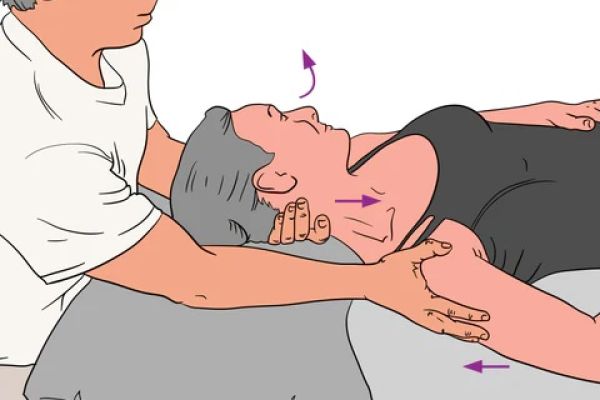
MANUAL ALIGNMENT THERAPY: ΜΙΑ ΟΛΙΣΤΙΚΗ ΘΕΡΑΠΕΥΤΙΚΗ ΠΡΟΣΕΓΓΙΣΗ
Ολιστική μέθοδος που αποκαθιστά τη σωστή ευθυγράμμιση του σώματος, μειώνοντας τον πόνο και βελτιώνοντας τη λειτουργικότητα μέσω χειροθεραπείας και εξατομικευμένων ασκήσεων.

ΙΣΧΙΑΛΓΙΑ: ΣΥΓΧΡΟΝΕΣ ΚΑΤΕΥΘΥΝΤΗΡΙΕΣ ΟΔΗΓΙΕΣ
Η σύγχρονη αντιμετώπιση για την ισχιαλγία δίνει έμφαση στη φυσικοθεραπεία, την ενεργό κινητοποίηση και την εκπαίδευση του ασθενούς για αποτελεσματική αποκατάσταση.

ΑΚΡΑΤΕΙΑ ΜΕΤΑ ΤΟΝ ΤΟΚΕΤΟ
Η ακράτεια μετά τον τοκετό επηρεάζει έως και μία στις τρεις γυναίκες, και συχνά παραμένει αδιάγνωστη λόγω ντροπής ή ελλιπούς ενημέρωσης.
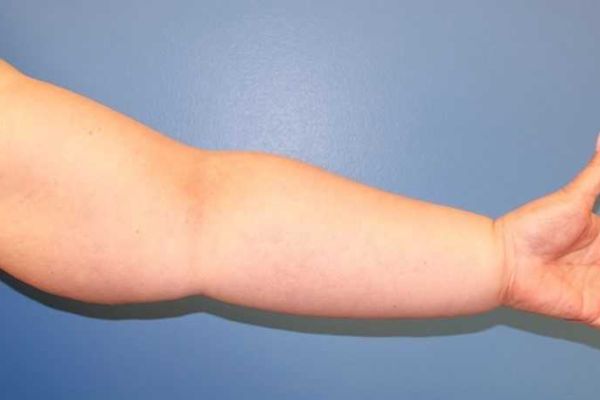
ΘΕΡΑΠΕΙΑ ΤΟΥ ΔΕΥΤΕΡΟΠΑΘΟΥΣ ΛΕΜΦΟΙΔΗΜΑΤΟΣ ΜΕΤΑ ΑΠΟ ΚΑΡΚΙΝΟ ΤΟΥ ΜΑΣΤΟΥ
Το δευτεροπαθές λεμφοίδημα του άνω άκρου αποτελεί μία από τις σημαντικότερες επιπλοκές της θεραπείας του καρκίνου του μαστού, επηρεάζοντας σημαντικά την ποιότητα ζωής των γυναικών.

ΑΥΧΕΝΙΚΟΣ ΠΟΝΟΣ
Ο αυχενικός πόνος και το αίσθημα δυσκαμψίας, ή "πιασίματος" στον αυχένα είναι από τις συχνότερες αιτίες αναζήτησης ιατρικής βοήθειας στον σύγχρονο κόσμο.

ΣΥΝΔΡΟΜΟ ΘΩΡΑΚΙΚΗΣ ΕΞΟΔΟΥ: ΑΝΑΣΚΟΠΗΣΗ ΤΗΣ ΣΥΓΧΡΟΝΗΣ ΒΙΒΛΙΟΓΡΑΦΙΑΣ
Το Σύνδρομο Θωρακικής Εξόδου συνιστά μια ετερογενή και αμφιλεγόμενη νοσολογική οντότητα με σημαντικές επιπτώσεις στην καθημερινή λειτουργία και δραστηριότητα του ατόμου.

ΠΟΙΕΣ ΚΑΤΗΓΟΡΙΕΣ ΑΝΘΡΩΠΩΝ ΕΙΝΑΙ ΕΥΑΛΩΤΕΣ ΣΤΟ STRESS ΚΑΙ ΠΩΣ ΜΠΟΡΟΥΝ ΝΑ ΤΟ ΔΙΑΧΕΙΡΙΣΤΟΥΝ
Το stress – ή αλλιώς άγχος – είναι η φυσική αντίδραση του σώματος όταν νιώθει πίεση, ή απειλή. Ωστόσο, δεν το βιώνουμε όλοι με τον ίδιο τρόπο∙ για κάποιους γίνεται απλή πρόκληση, ενώ για άλλους βαριά καθημερινή δοκιμασία.
 Σε μικρές δόσεις το stress μπορεί να λειτουργήσει ως κινητήρια δύναμη, όμως όταν γίνεται χρόνιο ή υπερβολικό διαβρώνει την ψυχική και σωματική υγεία. Σύμφωνα με τον Παγκόσμιο Οργανισμό Υγείας (WHO, 2020), το stress θεωρείται ένας από τους μεγαλύτερους παράγοντες κινδύνου για την υγεία στον 21ο αιώνα, επηρεάζοντας τόσο την ποιότητα ζωής, όσο και την εμφάνιση χρόνιων νοσημάτων. Υπάρχουν κατηγορίες τού πληθυσμού που αποδεικνύονται πιο ευάλωτες είτε λόγω βιολογικών παραγόντων, είτε λόγω κοινωνικών και επαγγελματικών συνθηκών, είτε λόγω ιδιαίτερων απαιτήσεων στη ζωή τους. Η κατανόηση αυτών των ομάδων είναι κρίσιμη, καθώς βοηθά στην ανάπτυξη πιο στοχευμένων στρατηγικών πρόληψης και παρέμβασης.
Σε μικρές δόσεις το stress μπορεί να λειτουργήσει ως κινητήρια δύναμη, όμως όταν γίνεται χρόνιο ή υπερβολικό διαβρώνει την ψυχική και σωματική υγεία. Σύμφωνα με τον Παγκόσμιο Οργανισμό Υγείας (WHO, 2020), το stress θεωρείται ένας από τους μεγαλύτερους παράγοντες κινδύνου για την υγεία στον 21ο αιώνα, επηρεάζοντας τόσο την ποιότητα ζωής, όσο και την εμφάνιση χρόνιων νοσημάτων. Υπάρχουν κατηγορίες τού πληθυσμού που αποδεικνύονται πιο ευάλωτες είτε λόγω βιολογικών παραγόντων, είτε λόγω κοινωνικών και επαγγελματικών συνθηκών, είτε λόγω ιδιαίτερων απαιτήσεων στη ζωή τους. Η κατανόηση αυτών των ομάδων είναι κρίσιμη, καθώς βοηθά στην ανάπτυξη πιο στοχευμένων στρατηγικών πρόληψης και παρέμβασης.
Ευάλωτες κατηγορίες ανθρώπων στο stress
 Παιδιά και έφηβοι: Τα παιδιά και οι έφηβοι βιώνουν stress που προκαλείται από ποικίλες πηγές: τις σχολικές απαιτήσεις, τις εξετάσεις, τον κοινωνικό ανταγωνισμό, ακόμη και από την πίεση που ασκούν τα μέσα κοινωνικής δικτύωσης. Το παιδικό και εφηβικό νευρικό σύστημα βρίσκεται σε φάση ανάπτυξης, γεγονός που καθιστά αυτήν την ομάδα περισσότερο εκτεθειμένη στις αρνητικές συνέπειες του άγχους. Έρευνες δείχνουν ότι η παιδική έκθεση σε χρόνιο stress συνδέεται με αυξημένο κίνδυνο εμφάνισης αγχωδών διαταραχών, κατάθλιψης, αλλά και σωματικών παθήσεων στην ενήλικη ζωή (Shonkoff et al., 2012).
Παιδιά και έφηβοι: Τα παιδιά και οι έφηβοι βιώνουν stress που προκαλείται από ποικίλες πηγές: τις σχολικές απαιτήσεις, τις εξετάσεις, τον κοινωνικό ανταγωνισμό, ακόμη και από την πίεση που ασκούν τα μέσα κοινωνικής δικτύωσης. Το παιδικό και εφηβικό νευρικό σύστημα βρίσκεται σε φάση ανάπτυξης, γεγονός που καθιστά αυτήν την ομάδα περισσότερο εκτεθειμένη στις αρνητικές συνέπειες του άγχους. Έρευνες δείχνουν ότι η παιδική έκθεση σε χρόνιο stress συνδέεται με αυξημένο κίνδυνο εμφάνισης αγχωδών διαταραχών, κατάθλιψης, αλλά και σωματικών παθήσεων στην ενήλικη ζωή (Shonkoff et al., 2012).- Νεαροί ενήλικες και φοιτητές: Οι φοιτητές και οι νεαροί ενήλικες καλούνται να διαχειριστούν την μετάβαση από την εφηβεία στην ενηλικίωση, γεγονός που συνοδεύεται από ακαδημαϊκές, κοινωνικές και οικονομικές προκλήσεις. Η αβεβαιότητα για το μέλλον, η πίεση για επαγγελματική αποκατάσταση και οι οικονομικές δυσκολίες καθιστούν αυτήν την ομάδα ιδιαίτερα ευάλωτη στο άγχος (Beiter et al., 2015).
 Εργαζόμενοι σε απαιτητικά επαγγέλματα: Το εργασιακό stress αποτελεί μία από τις πιο συχνές μορφές άγχους στη σύγχρονη κοινωνία. Ιδιαίτερα εκτεθειμένοι είναι οι επαγγελματίες υγείας, οι εκπαιδευτικοί, οι εργαζόμενοι σε θέσεις ευθύνης, αλλά και όσοι απασχολούνται σε ασταθή, ή χαμηλά αμειβόμενα επαγγέλματα. Το φαινόμενο της «επαγγελματικής εξουθένωσης» (burnout) έχει λάβει διαστάσεις παγκόσμιας επιδημίας (Maslach & Leiter, 2016).
Εργαζόμενοι σε απαιτητικά επαγγέλματα: Το εργασιακό stress αποτελεί μία από τις πιο συχνές μορφές άγχους στη σύγχρονη κοινωνία. Ιδιαίτερα εκτεθειμένοι είναι οι επαγγελματίες υγείας, οι εκπαιδευτικοί, οι εργαζόμενοι σε θέσεις ευθύνης, αλλά και όσοι απασχολούνται σε ασταθή, ή χαμηλά αμειβόμενα επαγγέλματα. Το φαινόμενο της «επαγγελματικής εξουθένωσης» (burnout) έχει λάβει διαστάσεις παγκόσμιας επιδημίας (Maslach & Leiter, 2016).- Γυναίκες: Οι γυναίκες αναφέρονται συχνά στη βιβλιογραφία ως πιο ευάλωτες στο stress, όχι μόνο λόγω βιολογικών παραγόντων (ορμονικές διακυμάνσεις, εγκυμοσύνη, εμμηνόπαυση), αλλά και λόγω του κοινωνικού ρόλου που καλούνται να διαδραματίσουν. Ο συνδυασμός επαγγελματικών, οικογενειακών και κοινωνικών απαιτήσεων μπορεί να οδηγήσει σε αυξημένα επίπεδα άγχους (APA, 2019).
- Φροντιστές ασθενών και γονείς παιδιών με ειδικές ανάγκες: Οι άνθρωποι που φροντίζουν άτομα με χρόνιες ασθένειες ή αναπηρίες συχνά βιώνουν έντονο και παρατεταμένο stress, γνωστό και ως «stress φροντιστή». Πρόκειται για μια κατηγορία που παρουσιάζει αυξημένο κίνδυνο κατάθλιψης, σωματικής κόπωσης και κοινωνικής απομόνωσης (Schulz & Sherwood, 2008).
 Άτομα με χρόνια νοσήματα: Ο χρόνιος πόνος, οι σωματικοί περιορισμοί και η συνεχής αβεβαιότητα για την πορεία τής υγείας συνδέονται με υψηλά επίπεδα stress. Ασθενείς με καρδιαγγειακά νοσήματα, σακχαρώδη διαβήτη, ή καρκίνο αναφέρουν συχνά έντονο άγχος, το οποίο με τη σειρά του επιδεινώνει την πορεία τής ασθένειας (Cohen et al., 2007).
Άτομα με χρόνια νοσήματα: Ο χρόνιος πόνος, οι σωματικοί περιορισμοί και η συνεχής αβεβαιότητα για την πορεία τής υγείας συνδέονται με υψηλά επίπεδα stress. Ασθενείς με καρδιαγγειακά νοσήματα, σακχαρώδη διαβήτη, ή καρκίνο αναφέρουν συχνά έντονο άγχος, το οποίο με τη σειρά του επιδεινώνει την πορεία τής ασθένειας (Cohen et al., 2007).- Ηλικιωμένοι: Η τρίτη ηλικία χαρακτηρίζεται από σημαντικές αλλαγές: απώλεια αγαπημένων προσώπων, συνταξιοδότηση, μείωση φυσικών ικανοτήτων. Αυτοί οι παράγοντες μπορούν να αυξήσουν την ψυχική πίεση και το αίσθημα μοναξιάς, καθιστώντας τούς ηλικιωμένους ευάλωτους σε αγχώδεις και καταθλιπτικές διαταραχές (Gum et al., 2009).
Επιπτώσεις του stress στην υγεία
 Το χρόνιο stress δεν είναι απλώς ένα ψυχολογικό βάρος· επηρεάζει ολόκληρο τον οργανισμό. Μεταξύ άλλων:
Το χρόνιο stress δεν είναι απλώς ένα ψυχολογικό βάρος· επηρεάζει ολόκληρο τον οργανισμό. Μεταξύ άλλων:
- Ενισχύει τη λειτουργία τού συμπαθητικού νευρικού συστήματος και αυξάνει τα επίπεδα κορτιζόλης.
- Συνδέεται με υπέρταση, καρδιαγγειακά νοσήματα και μεταβολικές διαταραχές.
- Αποδυναμώνει το ανοσοποιητικό σύστημα.
- Επιβαρύνει την ψυχική υγεία, οδηγώντας σε κατάθλιψη, αϋπνία κ.ά.
- Μειώνει την ποιότητα ζωής και την ανθεκτικότητα σε νέες προκλήσεις.
Στρατηγικές αντιμετώπισης του stress
Η διαχείριση του stress απαιτεί πολυδιάστατη προσέγγιση. Οι στρατηγικές περιλαμβάνουν αλλαγές στον τρόπο ζωής, ψυχολογική υποστήριξη, αλλά και σωματοθεραπευτικές μεθόδους.
1. Τρόπος ζωής
 Σωματική άσκηση: Η τακτική άσκηση μειώνει τα επίπεδα κορτιζόλης και αυξάνει τις ενδορφίνες.
Σωματική άσκηση: Η τακτική άσκηση μειώνει τα επίπεδα κορτιζόλης και αυξάνει τις ενδορφίνες.- Διατροφή: Ισορροπημένη διατροφή με επαρκή θρεπτικά συστατικά στηρίζει την ψυχική και σωματική ανθεκτικότητα.
- Ύπνος: Ο ποιοτικός ύπνος αποτελεί θεμέλιο για την αποκατάσταση του νευρικού συστήματος.
- Κοινωνική υποστήριξη: Οι διαπροσωπικές σχέσεις μειώνουν το αίσθημα απομόνωσης.
2. Ψυχολογικές παρεμβάσεις
- Γνωσιακή-συμπεριφορική θεραπεία (CBT): Αποτελεσματική στη διαχείριση δυσλειτουργικών σκέψεων.
- Mindfulness και διαλογισμός: Ενισχύουν την επίγνωση και μειώνουν τη ροπή προς το άγχος.
- Ομαδική θεραπεία, ή ομάδες υποστήριξης: Δημιουργούν αίσθημα κοινότητας.
3. Σωματοθεραπευτικές προσεγγίσεις και η Κρανιοϊερή Θεραπεία Upledger
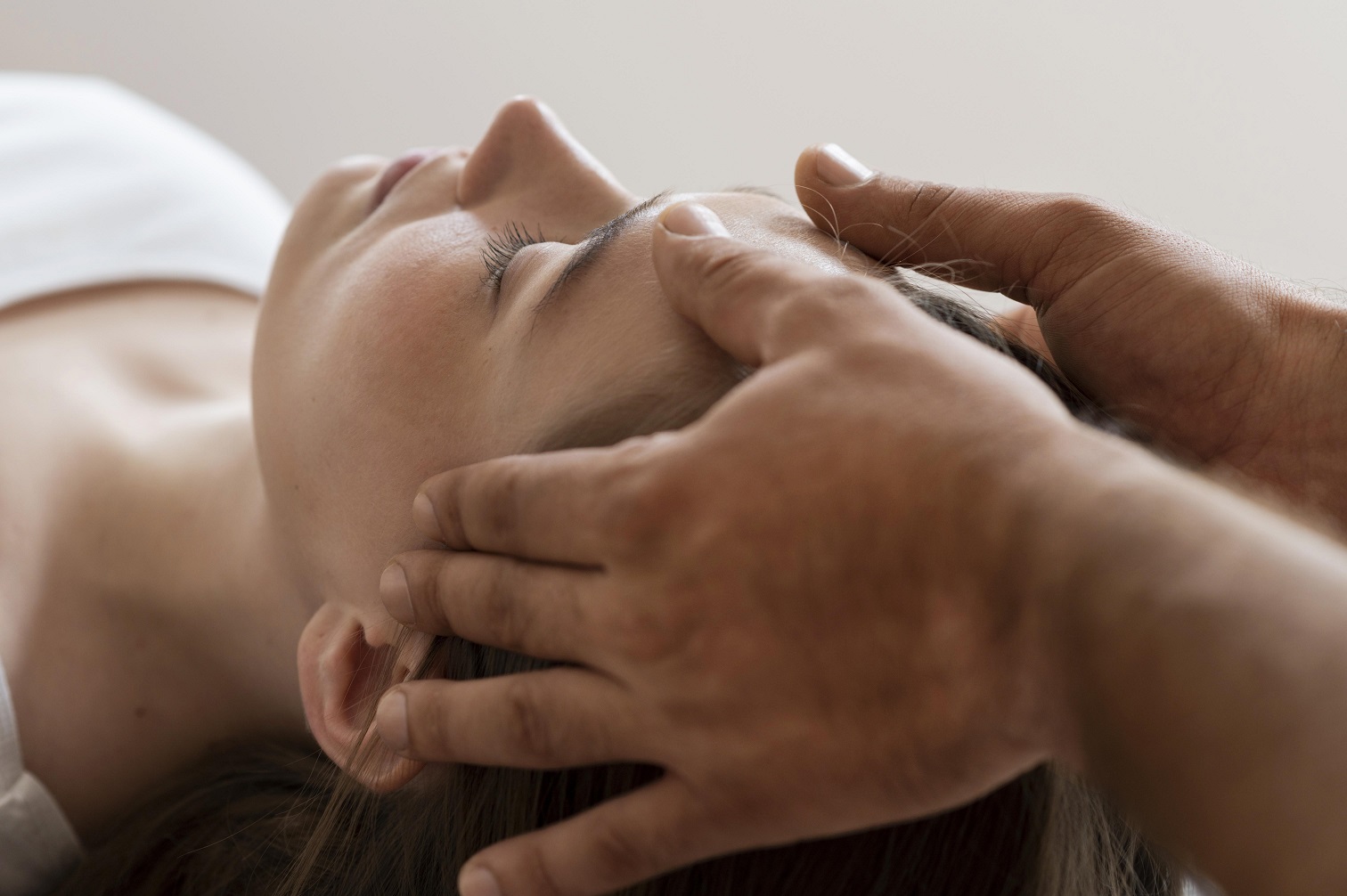 Η κρανιοϊερή θεραπεία (CranioSacral Therapy – CST) που αναπτύχθηκε από τον Dr. John Upledger αποτελεί μια ήπια, μη επεμβατική μέθοδο χειροθεραπείας που εστιάζει στη ρύθμιση του Κεντρικού Νευρικού Συστήματος μέσω της βελτίωσης της λειτουργικότητας του κρανιοϊερού συστήματος –δηλαδή του συστήματος των μεμβρανών και του εγκεφαλονωτιαίου υγρού που περιβάλλει τον εγκέφαλο και τον νωτιαίο μυελό. Με απαλές πιέσεις, ο θεραπευτής διευκολύνει την απελευθέρωση περιορισμών στους ιστούς, ενισχύοντας την αυτορρύθμιση του οργανισμού. Έρευνες υποδεικνύουν ότι η CST μπορεί να μειώσει τα επίπεδα άγχους, να βελτιώσει τον ύπνο και να ενισχύσει την αίσθηση χαλάρωσης (Matarán-Peñarrocha et al., 2011). Ιδιαίτερα για άτομα με χρόνιο stress, η κρανιοϊερή θεραπεία μπορεί να λειτουργήσει συμπληρωματικά σε άλλες παρεμβάσεις, επιτρέποντας στο σώμα να ανακτήσει ισορροπία.
Η κρανιοϊερή θεραπεία (CranioSacral Therapy – CST) που αναπτύχθηκε από τον Dr. John Upledger αποτελεί μια ήπια, μη επεμβατική μέθοδο χειροθεραπείας που εστιάζει στη ρύθμιση του Κεντρικού Νευρικού Συστήματος μέσω της βελτίωσης της λειτουργικότητας του κρανιοϊερού συστήματος –δηλαδή του συστήματος των μεμβρανών και του εγκεφαλονωτιαίου υγρού που περιβάλλει τον εγκέφαλο και τον νωτιαίο μυελό. Με απαλές πιέσεις, ο θεραπευτής διευκολύνει την απελευθέρωση περιορισμών στους ιστούς, ενισχύοντας την αυτορρύθμιση του οργανισμού. Έρευνες υποδεικνύουν ότι η CST μπορεί να μειώσει τα επίπεδα άγχους, να βελτιώσει τον ύπνο και να ενισχύσει την αίσθηση χαλάρωσης (Matarán-Peñarrocha et al., 2011). Ιδιαίτερα για άτομα με χρόνιο stress, η κρανιοϊερή θεραπεία μπορεί να λειτουργήσει συμπληρωματικά σε άλλες παρεμβάσεις, επιτρέποντας στο σώμα να ανακτήσει ισορροπία.
4. Ενσωμάτωση στην καθημερινότητα
 Η αντιμετώπιση του stress δεν μπορεί να βασιστεί σε μεμονωμένες παρεμβάσεις. Χρειάζεται καθημερινή φροντίδα:
Η αντιμετώπιση του stress δεν μπορεί να βασιστεί σε μεμονωμένες παρεμβάσεις. Χρειάζεται καθημερινή φροντίδα:
- Σταθερό πρόγραμμα ύπνου και ξεκούρασης.
- Συνειδητή ενασχόληση με δραστηριότητες που προσφέρουν χαρά.
- Προγραμματισμένη συμμετοχή σε πρακτικές χαλάρωσης (αναπνοές, γιόγκα, CST).
- Αναγνώριση των προσωπικών ορίων και διεκδίκηση ισορροπίας σε επαγγελματική και προσωπική ζωή.
Συμπεράσματα
Το stress είναι πια κομμάτι τής καθημερινότητας, αλλά δεν βαραίνει όλους με τον ίδιο τρόπο. Υπάρχουν ομάδες που το νιώθουν πιο έντονα –από τα παιδιά και τους φοιτητές, μέχρι τους εργαζόμενους, τις γυναίκες, τους φροντιστές, τα άτομα με χρόνια προβλήματα υγείας και τους ηλικιωμένους. Η διαχείριση του stress απαιτεί ολιστική προσέγγιση που να περιλαμβάνει υγιεινό τρόπο ζωής, ψυχολογική υποστήριξη και σωματοθεραπευτικές παρεμβάσεις. Στο πλαίσιο αυτό, η κρανιοϊερή θεραπεία Upledger μπορεί να προσφέρει ένα σημαντικό εργαλείο για την ενίσχυση της αυτορρύθμισης του οργανισμού και την καλλιέργεια βαθιάς χαλάρωσης. Η πρόληψη και η διαχείριση του stress δεν είναι πολυτέλεια· είναι απαραίτητη επένδυση για την υγεία, την ποιότητα ζωής και την κοινωνική ευημερία.
Πηγές
- American Psychological Association (APA). (2019). Stress in America: Stress and current events.
- Beiter, R., Nash, R., McCrady, M., Rhoades, D., Linscomb, M., Clarahan, M., & Sammut, S. (2015). The prevalence and correlates of depression, anxiety, and stress in a sample of college students. Journal of Affective Disorders, 173, 90-96.
- Cohen, S., Janicki-Deverts, D., & Miller, G. E. (2007). Psychological stress and disease. JAMA, 298(14), 1685–1687.
- Gum, A. M., King-Kallimanis, B., & Kohn, R. (2009). Prevalence of mood, anxiety, and substance-abuse disorders for older Americans in the National Comorbidity Survey–Replication. American Journal of Geriatric Psychiatry, 17(9), 769-781.
- Maslach, C., & Leiter, M. P. (2016). Understanding the burnout experience: recent research and its implications for psychiatry. World Psychiatry, 15(2), 103–111.
- Matarán-Peñarrocha, G. A., Castro-Sánchez, A. M., García, G. C., Moreno-Lorenzo, C., Carretero, T. L., & Zafra, M. Á. (2011). Influence of craniosacral therapy on anxiety, depression and quality of life in patients with fibromyalgia. Evidence-Based Complementary and Alternative Medicine, 2011, 178769.
- Schulz, R., & Sherwood, P. R. (2008). Physical and mental health effects of family caregiving. American Journal of Nursing, 108(9 Suppl), 23–27.
- Shonkoff, J. P., Boyce, W. T., & McEwen, B. S. (2012). Neuroscience, molecular biology, and the childhood roots of health disparities: Building a new framework for health promotion and disease prevention. JAMA, 301(21), 2252–2259.
- World Health Organization (WHO). (2020). Stress at the workplace.
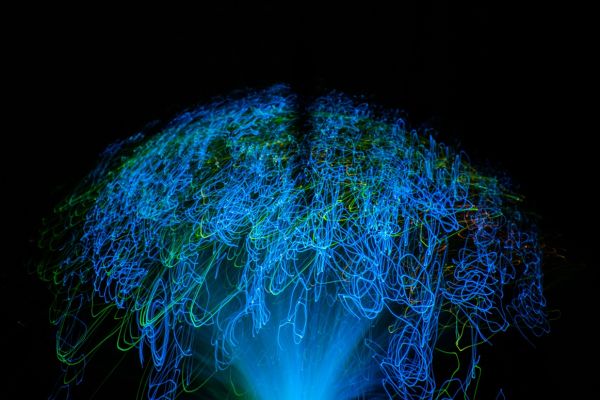
Η ΠΑΡΑΦΩΝΙΑ ΤΟΥ ΕΓΚΕΦΑΛΟΥ: ΓΙΑΤΙ Ο ΠΟΝΟΣ ΕΠΙΜΕΝΕΙ
Ακόμα κι όταν δεν υπάρχει πια σωματική βλάβη, ο εγκέφαλος μπορεί να συνεχίζει να “θυμάται” τον πόνο. Τα νευρωνικά του δίκτυα λειτουργούν έτσι ώστε να κρατούν τον πόνο ενεργό, παρόλο που δεν υπάρχει πια πραγματική ζημιά στον ιστό.

ΜΗΧΑΝΗΜΑ "ΕΝΕΡΓΗΣ ΘΕΡΑΠΕΥΤΙΚΗΣ ΚΙΝΗΣΗΣ" (ATM): Σύγχρονες Προσεγγίσεις στη Φυσικοθεραπεία
Η σύγχρονη φυσικοθεραπεία και αποκατάσταση έχει εμπλουτιστεί σημαντικά τα τελευταία χρόνια με την εισαγωγή καινοτόμων τεχνολογιών και θεραπευτικών προσεγγίσεων.

ΠΕΛΜΑΤΟΓΡΑΦΗΜΑ: ΕΝΑ ΧΡΗΣΙΜΟ ΕΡΓΑΛΕΙΟ
Κάθε φορά που κάνουμε ένα βήμα τα πόδια μας αφήνουν ένα "αποτύπωμα" πίεσης στο έδαφος. Mία μοναδική υπογραφή που αποκαλύπτει μυστικά για τον τρόπο που κινούμαστε, την υγεία μας και ακόμη και την προσωπικότητά μας.

